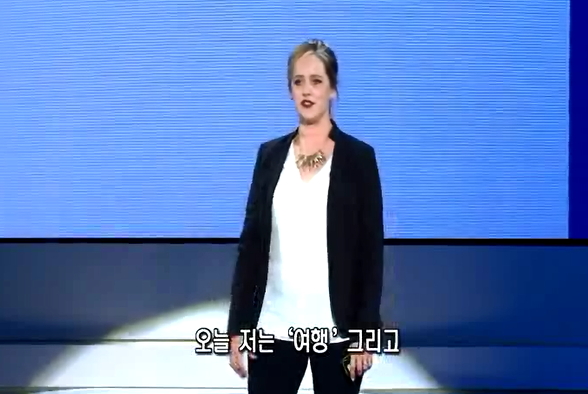The purpose of this study is to provide basic data needed for planning apartment community spaces in order to vitalize rental apartments. Indoor community spaces of 12 rental apartments in Seoul and Kyunggi were examined. The results are as follows. F...
http://chineseinput.net/에서 pinyin(병음)방식으로 중국어를 변환할 수 있습니다.
변환된 중국어를 복사하여 사용하시면 됩니다.
- 中文 을 입력하시려면 zhongwen을 입력하시고 space를누르시면됩니다.
- 北京 을 입력하시려면 beijing을 입력하시고 space를 누르시면 됩니다.

사례분석을 통한 임대아파트 실내 커뮤니티공간의 배치 및 이용실태 = A Case Study of Layout Plan and Use of Indoor Community Spaces in Rental Apartment Complexes
한글로보기https://www.riss.kr/link?id=A101790570
-
저자
황연숙 (한양대학교) ; 변혜령 (농어촌생활환경디자인연구소) ; 이송현 (한양대학교) ; 어성신 (한양대학교) ; Hwang, Yeon-Sook ; Byun, Hea-Ryung ; Lee, Song-Hyun ; Eo, Sung-Sin
- 발행기관
- 학술지명
- 권호사항
-
발행연도
2010
-
작성언어
Korean
- 주제어
-
등재정보
KCI등재
-
자료형태
학술저널
- 발행기관 URL
-
수록면
99-109(11쪽)
-
KCI 피인용횟수
6
- DOI식별코드
- 제공처
- 소장기관
-
0
상세조회 -
0
다운로드
부가정보
다국어 초록 (Multilingual Abstract)
The purpose of this study is to provide basic data needed for planning apartment community spaces in order to vitalize rental apartments. Indoor community spaces of 12 rental apartments in Seoul and Kyunggi were examined. The results are as follows. First, the layout types of indoor community spaces in rental apartment complexes were found out to be mostly the building type planned in the piloties of the apartment, or the singular type placed in a singular building. Depending on the layout type, the spaces were mostly concentrated at the outskirt of the complex or the in-between space of the main building, thus lowering their recognition. Thereby, they were not satisfactory for utilization of the spaces and association of residents. Second, Indoor community space legal establishment standard and square measure did not reflect resident's feature except elderly spaces, and there was problem in activation of space. Third, as for the spatial planning of indoor community space, although each space was categorized by the users' age, the furniture and appliance planning considering users was not satisfactory. The area calculation by the type of space did not reflect the users' characteristics, thus causing problems in using the facilities. Fourth, as for the management and programs of the indoor community space, spaces were managed after categorized by the major user classes such as children, seniors, and adolescents. Depending on eagerness of program managers of each apartment complex, the level of program management varied. The survey results showed that, in most cases, almost no programs were used or merely basic management and programs were being provided.
참고문헌 (Reference)
1 노이경, "초고층 주상복합아파트 커뮤니티시설의 공간실태 및평가에 관한 연구" 한국주거학회 18 (18): 39-47, 2007
2 김미희, "주의식과 주민전용 공동공간에 대한 요구" 8 (8): 91-98, 1997
3 곽도, "주민중심형 아파트 공동체 활성화 방안 연구" 중앙대학교 2007
4 강혜경, "아파트단지 커뮤니티 디자인을 위한 공동생활공간의 계획방향연구" 부산대학교 2002
5 신연섭, "아파트 부대복리공간에 대한 거주자 의식 및 사용실태 조사연구" 한국실내디자인학회 15 (15): 166-174, 2006
6 박광재, "아파트 공동체 실현을 위한 방안연구" 대한주택공사주택도시연구원 2001
7 백혜선, "아파트 공동체 실현을 위한 단지내 주민공동시설 이용현황 및 사례" 91-107, 2002
8 정승진, "아파트 거주자의 커뮤니티 공간과 프로그램 이용 및 요구도" 한국주거학회 14 (14): 41-50, 2003
9 신화경, "아파트 거주 노인의 노인정 이용에 관한 연구" 462-466, 2006
10 황연숙, "세대연령에 따른 국민임대주택 커뮤니티시설의 거주자 의식 및 요구에 관한 연구" 한국실내디자인학회 19 (19): 145-153, 2010
1 노이경, "초고층 주상복합아파트 커뮤니티시설의 공간실태 및평가에 관한 연구" 한국주거학회 18 (18): 39-47, 2007
2 김미희, "주의식과 주민전용 공동공간에 대한 요구" 8 (8): 91-98, 1997
3 곽도, "주민중심형 아파트 공동체 활성화 방안 연구" 중앙대학교 2007
4 강혜경, "아파트단지 커뮤니티 디자인을 위한 공동생활공간의 계획방향연구" 부산대학교 2002
5 신연섭, "아파트 부대복리공간에 대한 거주자 의식 및 사용실태 조사연구" 한국실내디자인학회 15 (15): 166-174, 2006
6 박광재, "아파트 공동체 실현을 위한 방안연구" 대한주택공사주택도시연구원 2001
7 백혜선, "아파트 공동체 실현을 위한 단지내 주민공동시설 이용현황 및 사례" 91-107, 2002
8 정승진, "아파트 거주자의 커뮤니티 공간과 프로그램 이용 및 요구도" 한국주거학회 14 (14): 41-50, 2003
9 신화경, "아파트 거주 노인의 노인정 이용에 관한 연구" 462-466, 2006
10 황연숙, "세대연령에 따른 국민임대주택 커뮤니티시설의 거주자 의식 및 요구에 관한 연구" 한국실내디자인학회 19 (19): 145-153, 2010
11 황연숙, "사례분석을 통한 임대아파트 실내 커뮤니티공간의 배치 및 이용실태" 240-244, 2009
12 조성희, "공동주택단지의 커뮤니티디자인을 위한 공동생활공간에 관한 연구" 12 (12): 19-31, 2001
13 서수정, "공동주택단지내 부대복리시설의 공간변용에 관한 연구" 대한건축학회 20 (20): 219-230, 2004
14 윤지은, "공동주택 커뮤니티시설 배치의 유형분석에 관한 연구" 동아대학교 2006
15 곽지훈, "공동주택 거주성 지원을 위한 커뮤니티 공간디자인 연구" 이화여자대학교 2006
동일학술지(권/호) 다른 논문
-
주거공간에 적용 가능한 신소재 특성 및 기준에 관한 기초 연구
- 한국주거학회
- 정선희
- 2010
- KCI등재
-
중.장년층 기혼여성의 라이프스타일에 따른 주거양식에 관한 연구
- 한국주거학회
- 윤정숙
- 2010
- KCI등재
-
주거단지 배치계획을 위한 증강현실 기술의 활용방안에 관한 기초연구
- 한국주거학회
- 류정림
- 2010
- KCI등재
-
아파트 단지 내 커뮤니티 시설의 운영 실태와 거주 후 평가 - 전문관리자 운영의 대구 R아파트 단지를 중심으로-
- 한국주거학회
- 강순주
- 2010
- KCI등재
분석정보
인용정보 인용지수 설명보기
학술지 이력
| 연월일 | 이력구분 | 이력상세 | 등재구분 |
|---|---|---|---|
| 2022 | 평가예정 | 재인증평가 신청대상 (재인증) | |
| 2019-01-01 | 평가 | 등재학술지 유지 (계속평가) |  |
| 2016-01-01 | 평가 | 등재학술지 선정 (계속평가) |  |
| 2015-12-01 | 평가 | 등재후보로 하락 (기타) |  |
| 2011-01-01 | 평가 | 등재학술지 유지 (등재유지) |  |
| 2009-01-01 | 평가 | 등재학술지 유지 (등재유지) |  |
| 2007-01-01 | 평가 | 등재학술지 유지 (등재유지) |  |
| 2004-01-01 | 평가 | 등재학술지 선정 (등재후보2차) |  |
| 2003-01-01 | 평가 | 등재후보 1차 PASS (등재후보1차) |  |
| 2002-01-01 | 평가 | 등재후보학술지 유지 (등재후보1차) |  |
| 2000-07-01 | 평가 | 등재후보학술지 선정 (신규평가) |  |
학술지 인용정보
| 기준연도 | WOS-KCI 통합IF(2년) | KCIF(2년) | KCIF(3년) |
|---|---|---|---|
| 2016 | 0.52 | 0.52 | 0.51 |
| KCIF(4년) | KCIF(5년) | 중심성지수(3년) | 즉시성지수 |
| 0.54 | 0.53 | 0.797 | 0.13 |




 ScienceON
ScienceON DBpia
DBpia







